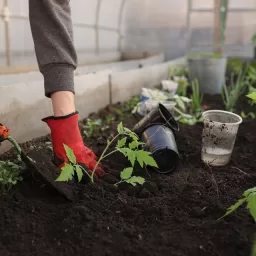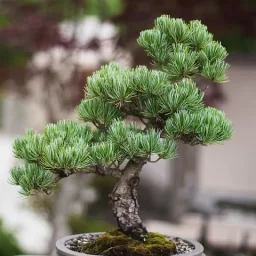Relocating (Transplanting) Cycads
The process of cycad relocation has taken place since early botanists and cycad enthusiasts first realized that cycad pups and parent plants could be successfully removed from habitat and reestablished in a different location. This process continues today for a variety of reasons, which involve both commercial and conservation purposes.
As a general rule when I relocate cultivated cycads from the field, I start by removing 10-50% of the older (lower) leaves. This will take some of the burden off of the plant when the root system is compromised by the transplanting process. Then I tag a remaining leaf that indicates its directional orientation, e.g. leaf pointing east. After that I dig a circular channel as viewed from overhead around the caudex (trunk or bulb) to the diameter equal to approximately 3-4 times the diameter of the caudex. For example, a caudex with a 10 inch diameter would begin with a channel hole being dug at about 30-40 inches in diameter, with the 10 inch caudex in the center. I continue to dig down to approximately 3-4 times the diameter of the caudex, gradually undercutting the root ball.
As this process continues, and the root ball becomes more defined, I try to selectively trowel off or hose off additional soil around the root ball, while trying to preserve as much root mass as possible. The goal is to eliminate as much of the weight of unneeded soil in the root ball as is feasible. Cutting some of the root system is necessary. As the root ball is carefully reduced in size, you must determine your capability to extricate the root ball relatively intact with your available manpower or mechanical assistance. This crucial step will be left to the ingenuity of the perpetrators. I have seen many techniques work successfully. After the cycad has been removed, I examine the root ball and cut cleanly any ragged roots, which are visible on the outside of the root ball, and treat them with fungicide and/or rooting hormone. A dolly, rolling cart, or other mechanical device can be used to transport the plant to its new location or for potting or boxing up. If transplanting in the ground, I try to select a location that has a slope or a mound type of terrain feature. Cycads prefer good drainage, so a well-draining sandy loam or decomposed granite in combination with a mounded or sloped location will accommodate those needs.
When the location has been determined, I dig my hole to about 1½ times the diameter of the root ball. Then I carefully lower the plant and root ball into the center of the hole, taking care to orient the plant according to the tag that was attached to one of the leaves prior to moving. Reorienting the plant to its original direction can eliminate one of the minor elements of stress that the plant endures during the relocation process.
When the plant is centered and properly oriented, then I begin to backfill the indigenous soil around the root ball, carefully tamping it as the hole is being filled. It is important to maintain the same soil level on the caudex as it had at its original location. In order to concentrate food and water around the newly developing root system, I recommend creating an earthen basin surrounding the caudex that will extend slightly beyond its root perimeter. Then I water the plant thoroughly to wet out all of the soil of the root ball and its new surrounding soil.
After all the soil has been drenched, I like to finish by filling the entire basin with a 5 gallon bucket of water with liquid rooting hormone added in and letting it soak in. Then I recommend letting the rooting hormone do its job for about 2 to 3 weeks before watering again. It would not hurt to follow up with the liquid hormone on 2 or3 of the successive watering periods.
Although this process can be done successfully almost any time of the year, I feel that the optimal time is in the early to late spring. This gives the plant the best time of the growing season to regenerate roots and eventually produce a new flush of leaves. Don’t be surprised if your plant produces a cone or leaves that are smaller and/or fewer in number than usual. This is a normal response to a plant that has gone through the shock or relocating or transplanting. Within a season or two, as the root system reestablishes, the plant will eventually produce leaves and cone(s) that are normal for its caudex size. If your transplanting has taken place in early to late spring, I recommend that you hold off feeding for 2 to 3 months to allow the root system to start to recover. Then water and feed as you would normally.
Grow and prosper,
Keith
potting soil
#Relocating #Transplanting #Cycads
Will be pleased to have you visit my pages on social networking .
Facebook page here.
Twitter account is here.
Linkedin account here
Post byBedewy for info askme VISIT GAHZLY


